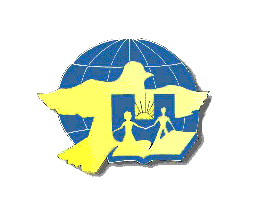|
The transatlantic slave trade, which fuelled the world economy during the 18th century, saw the greatest deportation in history (see below & pp. 12-13). This must be said out loud, and we must continue examining the evidence of it. This terrible human tragedy, spread out over several centuries, and "legitimized" by racist arguments (p.9), has been pushed back into the depths of our collective memory - as is patently clear, for example, in the treatment it receives in school textbooks (p.8). Yet, the slave trade left a heavy legacy. It shook the African continent's evolution to its foundations, weakening all development there since (p. 10). it also produced a cultural dynamism in the Americas and the Caribbean, the value and potential for creativity of which was long denied (p. 11). Recognizing and assuming this legacy is very much a subject of current and often bitter debate (p. 14). It's also a preliminary condition for a more serene and cooperative relationship between the three continents concerned (p. 15), UNESCO's ultimate heading for the Slave Route (p. 16).
UNESCO's "Slave Route" project is
inspired by French historian Jean-Michel Deveau's comment that the transatlantic slave trade was "the greatest tragedy in human history because of its extent and the time it lasted. " A tragedy which wrenched tens of millions of Africans from their villages to be transported to the Americas and the West Indies.
Slavery is a universal phenomenon. The Ancient Greeks made it into a fine art. But the transatlantic trade was special in three ways - its duration (about 400 years), its racial nature (the black African as its main symbol) and its legal organization (the special laws which were drawn up).
This is why the slave trade is so firmly repressed in history and in the subconscious of those involved. The UNESCO project wants to go beyond the legitimate feelings this human commerce arouses and sponsor rigorous scientific research into the root causes, methods and consequences of the trade.
The slave trade is barely present in humanity's collective memory and history books, even African histories. This silence has 'fed the fertile womb which gave birth to the vile beast, " in the words of German playwright Bertold Brecht. The fight for human rights is a fight for remembrance, for any tragedy hidden away can appear again in different forms.
The project is also an opportunity to rethink Africa, whose major problems of under-development and ethnic conflicts cannot be explained without reference to the unprecedented savagery of the trade.
It is also a chance for Africa to display once more its incredible cultural vitality. African slaves stood up to the violence of the slave trade armed with the living force of their culture, their gods, their legends, values, traditions and rhythms - all of these buried in their souls, beyond the reach of the slave owner, who was only interested in their bodies.
WREAKING HAVOC
But slave trafficking would not have lasted as long as it did without an ideology of moral justifications and legal structures. The ideology was the intellectual argument of racial superiority - the cultural denigration of black people and of Africa which rationalized the sale of human beings as merchandise. The slave trade has now disappeared, but the racism that underpinned it is still wreaking havoc. The judicial structures grew out of the notorious "Codes noirs, " (Black Codes) which have been removed from historical and legal memory, but which urgently need to be recalled.
The slave trade was also the biggest forced movement of people in history and was thus a meeting - or a throwing together of cultures. This intermingling of Africans, Americans Indians and Europeans has produced the cultural dynamism that marks the Americas and the Caribbean today. It could also prove to be the crucible for what has to be a major goal for the third millenium: cultural pluralism, or the ability and the potential of different people, religions and cultures to live side by side.
In modem city suburbs, the vibrant artistic expressions rooted in slave trade interaction in the Americas and the Caribbean, such as rap music, raise the question of cultural pluralism in western societies. UNESCO wants to highlight this pluralism through "The Slave Route" project, which aims to consider the process of identity resulting from this interaction, from the chemistry between the essence of a people and what they receive from the outside, even if through violence.
So UNESCO is promoting a kind of collective catharsis to move things from tragedy to life. To show Europe, Africa, the Americas and the Caribbean travelling the same road together towards a common future - facing a tragedy as one and consciously fertilizing the result in the spirit of a culture of peace.
Doudou Dične - Director, Intercultural Projects
|

